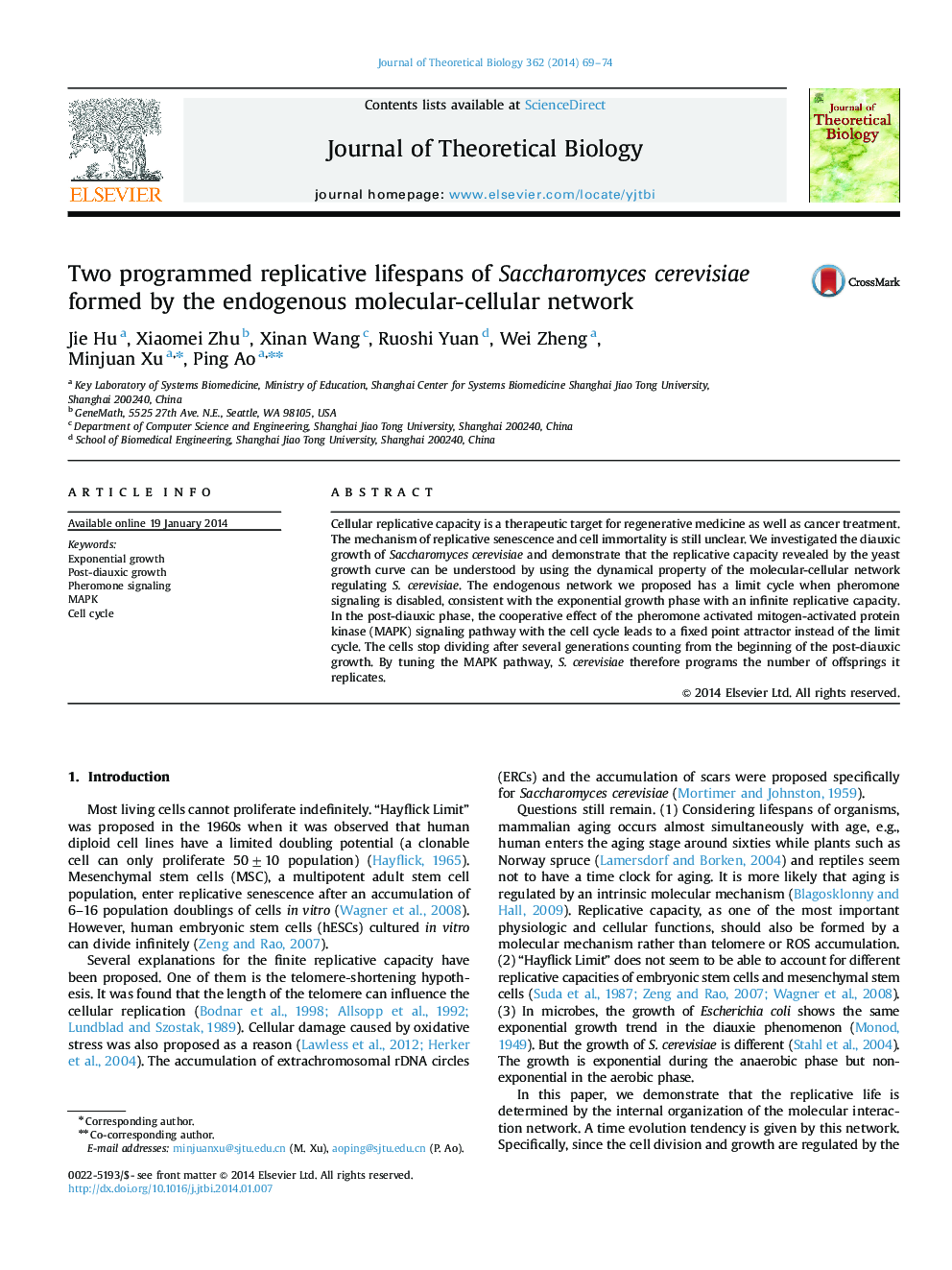| Article ID | Journal | Published Year | Pages | File Type |
|---|---|---|---|---|
| 4496088 | Journal of Theoretical Biology | 2014 | 6 Pages |
Cellular replicative capacity is a therapeutic target for regenerative medicine as well as cancer treatment. The mechanism of replicative senescence and cell immortality is still unclear. We investigated the diauxic growth of Saccharomyces cerevisiae and demonstrate that the replicative capacity revealed by the yeast growth curve can be understood by using the dynamical property of the molecular-cellular network regulating S. cerevisiae. The endogenous network we proposed has a limit cycle when pheromone signaling is disabled, consistent with the exponential growth phase with an infinite replicative capacity. In the post-diauxic phase, the cooperative effect of the pheromone activated mitogen-activated protein kinase (MAPK) signaling pathway with the cell cycle leads to a fixed point attractor instead of the limit cycle. The cells stop dividing after several generations counting from the beginning of the post-diauxic growth. By tuning the MAPK pathway, S. cerevisiae therefore programs the number of offsprings it replicates.
